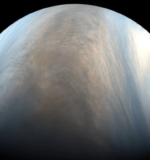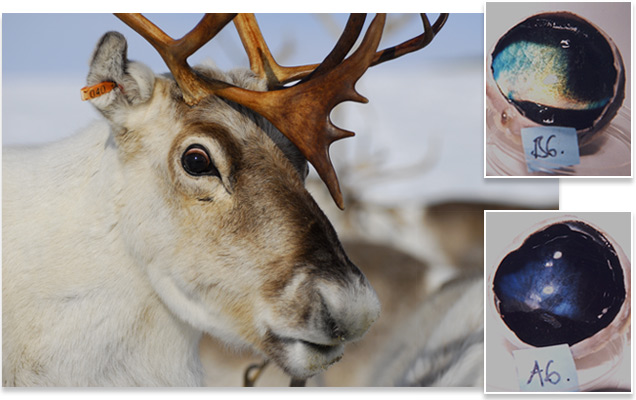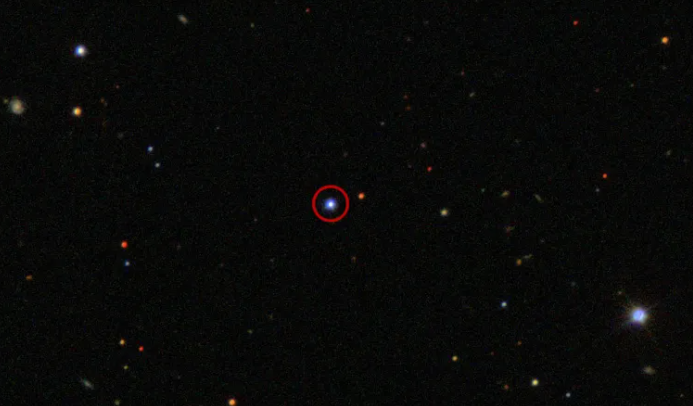Venus, the Evening Star, may gleam prettily in our night sky, but up close it’s about as inhospitable as a rocky planet can be, with sulphuric acid rains, a suffocating CO2 atmosphere, and a surface atmospheric pressure up to 100 times greater than Earth’s.
Based on our understanding of life on Earth, Venus would be among the last places in the Solar System you’d look to find living creatures. But an international team of scientists has just made a detection that might – just might – be a biosignature.
Conversely, it might be the sign of an abiotic chemical process that we don’t yet know of. Or there might be some poorly understood geological process occurring on Venus. Either way, this discovery is the harbinger of one heck of a learning experience.
High up in those thick clouds, where conditions are more temperate and less crushing (if not less toxic) than the surface, researchers have detected traces of phosphine gas, a compound produced here on Earth by both biotic and abiotic processes.
According to the researchers, the known abiotic processes are unlikely to have produced the abundances of phosphine – around 20 parts per billion (ppb) – found in the Venusian cloud decks.
The team detected the unique spectral signature of phosphine using two different instruments at different times – the James Clerk Maxwell Telescope in 2017 and the Atacama Large Millimeter/submillimeter Array in 2019.
“I was stunned, frankly,” the study’s lead author and astrobiologist Jane Greaves of Cardiff University told ScienceAlert.
“[That abundance] suggests organisms – if working how they do on Earth – could be a sufficient source. They could only be at 10 percent of the peak efficiency in producing phosphine that we see from Earth organisms, and they would produce the abundance we see on Venus.”
What made the detection even more intriguing is those acidic Venusian clouds, which would be likely to destroy phosphine very quickly. Two detections nearly two years apart suggest that whatever is producing the compound is ongoing.
The next step in the research was to exhaustively study any other known processes that can produce phosphine.
On Saturn and Jupiter, phosphine – formed from one phosphorus and three hydrogen atoms – has been detected in quite significant quantities; it forms in the hot, high-pressure interiors of the gas giants, and is churned out to the surface via convection.
But for all its surface heat and pressure, Venus isn’t thought able to match these phosphine formation conditions as found in the local gas giants.
Other processes, such as lightning striking a phosphorus-bearing location, or phosphorus-bearing micrometeorites, could produce atmospheric phosphine, but the team ruled these mechanisms out, too – they’re simply not prevalent enough on Venus to produce 20 ppb of phosphine.
On Earth, phosphine has been found in abundance in anaerobic (low in oxygen) ecosystems. It’s found in swamps and sludges, where anaerobic microbes thrive. It’s found in intestines and, well, farts. Somehow, anaerobic microorganisms produce phosphine. And the clouds of Venus are anaerobic.
Just last month, a team of scientists – some of whom were part of this new discovery – explored and found plausible the possibility of a permanent floating microbe community living in the clouds of Venus, in exactly the temperate zone in which Greaves and her team found phosphine. So the discovery is certainly a tantalising prospect.
But the presence of life is far from being the only possible explanation. One phosphine-producing process here on Earth is volcanic activity. And while the team ruled this out, finding that volcanic activity is insufficient and citing a 2015 paper, research from earlier this year suggests Venus may be more volcanically active than previously thought.
“On Earth we do have phosphine gas that comes from volcanic sources,” planetary scientist Helen Maynard-Casely of Australia’s Nuclear Science and Technology Organisation told ScienceAlert. Maynard-Casely was not involved in the research.
“This is ruled out in this paper, because they judge the amount of phosphine they observe could not be supported by volcanoes alone. I find this a little surprising, as there is abundant evidence for volcanic activity on Venus, much more than on Earth, plus we have much less of an idea of what the Venus surface is made out of.”
Greaves’ team is also careful to point out that there may be an unknown chemical process driving the synthesis of phosphine on Venus. Given the challenges of studying the planet up close – Venus has fried more than one lander, with none surviving more than a couple of hours – we don’t understand its surface well at all, so unknown chemistry or geology is a strong possibility.
“It could suggest a whole reaction network we hadn’t discovered before, or abundance of, for example, phosphorus-bearing minerals that’s a lot different to Earth,” Greaves told ScienceAlert.
Whatever is producing the phosphine signature in Venus’ atmosphere, finding the answer is going to teach us something new – whether that’s something about chemistry, phosphorus and the processes that create phosphine… or whether it’s something about the tenacity of life itself.
“A lot of the search for biology occurring elsewhere than our own Earth is centred around finding a place where biology as we know it on Earth can survive. This is the reason why Jupiter’s moons Europa and Ganymede are seen as potential spots for hosting biological activity, because they are both thought to have oceans under their ice surfaces that would be rich in minerals and sheltered from the viscous space weather, not unlike our own oceans,” Maynard-Casely said.
“If we found evidence for biology occurring in a place that nothing on Earth could survive in, then that really does throw the doors open that a multitude of biological activity could be happening, perhaps all over the Solar System.”
The next steps in solving this mystery may be easier said than done, however. We can take more observations using powerful telescopes. But we may need closer observations, either from an orbiting probe, of which currently only one, JAXA’s Akatsuki, is operational, or – much more challenging – a lander.
There are several proposed missions to Venus in the pipeline, but it’s often a long time between proposal and execution.
In the meantime, modelling and experimentation could start narrowing down the possibilities.
“It’s very hard to prove a negative. Now, astronomers will think of all the ways to justify phosphine without life, and I welcome that,” said molecular astrophysicist Clara Sousa-Silva of MIT.
“Please do, because we are at the end of our possibilities to show abiotic processes that can make phosphine.”
The research has been published in Nature Astronomy.








 Photographer Finds Locations Of 1960s Postcards To See How They Look Today, And The Difference Is Unbelievable
Photographer Finds Locations Of 1960s Postcards To See How They Look Today, And The Difference Is Unbelievable  Hij zet 3 IKEA kastjes tegen elkaar aan en maakt dit voor zijn vrouw…Wat een gaaf resultaat!!
Hij zet 3 IKEA kastjes tegen elkaar aan en maakt dit voor zijn vrouw…Wat een gaaf resultaat!!  Scientists Discover 512-Year-Old Shark, Which Would Be The Oldest Living Vertebrate On The Planet
Scientists Discover 512-Year-Old Shark, Which Would Be The Oldest Living Vertebrate On The Planet  Hus til salg er kun 22 kvadratmeter – men vent til du ser det indvendigt
Hus til salg er kun 22 kvadratmeter – men vent til du ser det indvendigt  Superknepet – så blir snuskiga ugnsformen som ny igen!
Superknepet – så blir snuskiga ugnsformen som ny igen!  Meteorite That Recently Fell in Somalia Turns Out to Contain Two Minerals Never Before Seen on Earth
Meteorite That Recently Fell in Somalia Turns Out to Contain Two Minerals Never Before Seen on Earth  Nearly Frozen Waves Captured On Camera By Nantucket Photographer
Nearly Frozen Waves Captured On Camera By Nantucket Photographer  It’s Official: Astronomers Have Discovered another Earth
It’s Official: Astronomers Have Discovered another Earth 